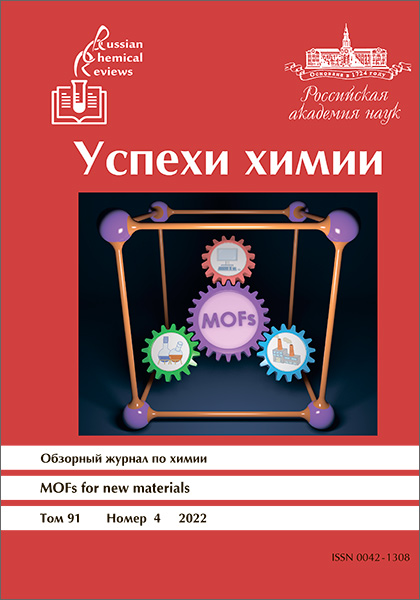|
This article is cited in 26 scientific papers (total in 26 papers)
Topological methods for analysis and design of coordination polymers
E. V. Alexandrov, A. P. Shevchenko, N. A. Nekrasova, V. A. Blatov
Samara State Technical University

Abstract:
A comprehensive review of the methods for topological analysis of crystalline compounds as applied to the structures of coordination polymers is presented for the first time. The basic concepts of reticular chemistry, a new branch of science, which combines methods of synthetic chemistry with methods for topological design of polymer compounds, are considered. Reticular chemistry methods are illustrated with examples of the analysis and design of coordination polymers. The most complete classification of coordination polymers, which are similar in terms of various compositional and topological parameters, is given. This review describes and integrates information on the topological analysis tools, such as computer software and electronic databases. A special attention is paid to the application of topological methods in the machine analysis and the prediction of structures and properties of coordination polymers, in particular to the establishment of chemical composition–structure–property relationships and the development of knowledge bases and artificial intelligence systems. A procedure for the search for the general crystal-chemical features using automated heuristic analysis of large samples of structural data is discussed. It is shown how this analysis can be used to determine the limits of applicability of reticular chemistry and the possibility of its extension to coordination polymers containing structurally, chemically and topologically complex building units with high conformational flexibility. Approaches of reticular chemistry are considered in detail in relation to the design of proton-conducting coordination polymers, which have received considerable attention in the past decade. The specific features of the topological structures of this class of compounds are described in a systematic way. The relationships between the chemical composition, structure and conductive properties of these compounds and the applicability of targeted design are discussed.
Bibliography — 303 references.
Keywords:
coordination polymers, metal-organic frameworks, topology, crystal structure, design, reticular chemistry, databases, proton conductivity.
Received: 03.07.2021
Citation:
E. V. Alexandrov, A. P. Shevchenko, N. A. Nekrasova, V. A. Blatov, “Topological methods for analysis and design of coordination polymers”, Usp. Khim., 91:4 (2022), RCR5032; Russian Chem. Reviews, 91:4 (2022), RCR5032
Linking options:
https://www.mathnet.ru/eng/rcr4384https://doi.org/10.1070/RCR5032
|


| Statistics & downloads: |
| Abstract page: | 133 |
|






 Contact us:
Contact us: Terms of Use
Terms of Use
 Registration to the website
Registration to the website Logotypes
Logotypes








 Citation in format
Citation in format 
